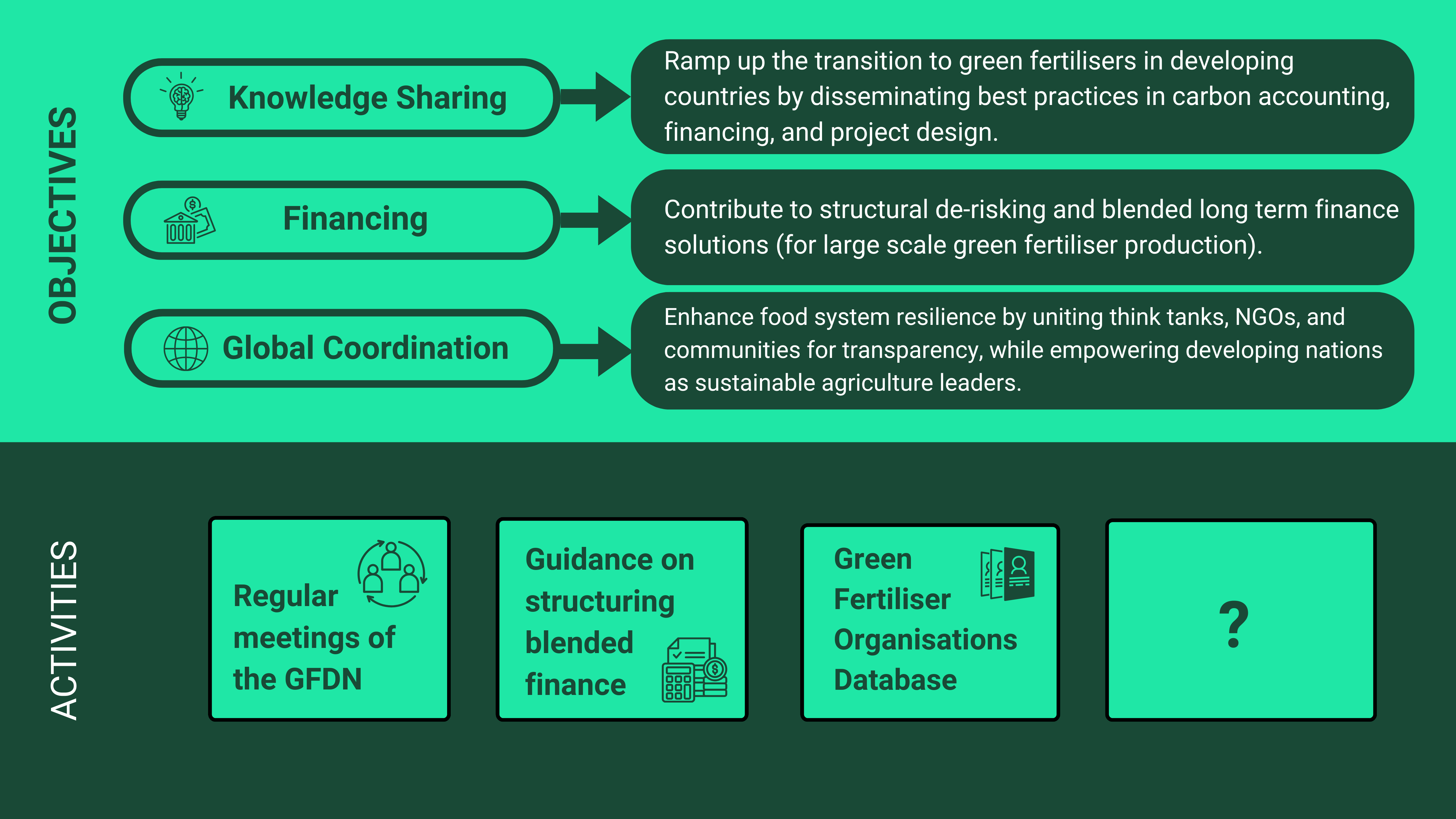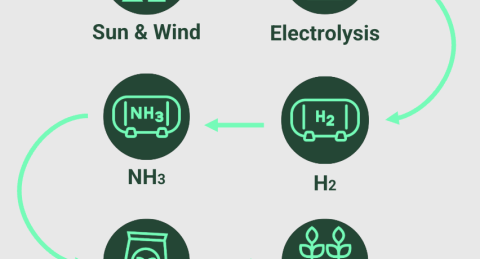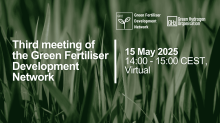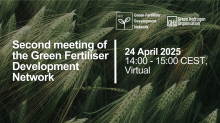Green Fertiliser Development Network
The Green Fertiliser Development Network (GFDN) has been established by GH2 to accelerate the financing and production of green fertilisers in emerging markets and developing countries (EMDCs).

"We’re not growing the industry – we’re starting from scratch".
Jonas Moberg,
CEO, GH2
The network is tracking progress, identifying challenges and proposing solutions for green fertiliser projects. Within the network, we will share updates on global green fertiliser projects and develop enabling policy and technical guidance on green fertiliser manufacturing and financing tailored to EMDCs. The network will also organise annual forums to showcase innovations and build partnerships among stakeholders.
Upcoming meeting
The third meeting of the Green Fertiliser Development Network will be held virtually on the 12 June, 14:00 – 15:00 CEST. It will focus on development finance for green fertilisers, with a couple of development finance institutions participating. Sign up to the Green Fertiliser Development Network to stay in the loop and receive the invitation!
Person of contact: Simran Sinha, Programme Officer, simran.sinha@gh2.org
The Green Fertiliser Opportunity
Green fertiliser for a carbon-free sector
All mineral nitrogen fertilisers are made using ammonia, produced from the combination of hydrogen and nitrogen. In 2023, about 70% of global ammonia was used for fertiliser production, which it its main application. Traditional ammonia production relies almost exclusively on methane and contributes significantly to global CO2 emissions, accounting for about 450 million tonnes annually. This is equivalent in size to 1.5 times France’s fossil fuel emissions. Using green hydrogen (electrolysis using renewable electricity separating oxygen and hydrogen) and nitrogen (separated from the air) has the potential to eliminate virtually all emissions associated with ammonia production and decarbonise the fertiliser industry.
With the falling cost of renewable energy and innovation in ammonia production, the price of nitrogenous fertilisers is falling, and the “green premium” is shrinking, particularly in developing countries and emerging markets. There are currently several large green ammonia projects around the world, though none are designed to produce fertilisers for EMDCs. It is vital to facilitate the discussion on green fertilisers for EMDCs to address climate impacts and accelerate the transition.
Green fertiliser and food security
Green fertilisers have the potential to significantly enhance food security by increasing the affordability and availability of sustainable fertilisers for farmers in EMDCs. Sub-Saharan Africa’s fertiliser usage is one-fifth of the global average, a gap that green fertilisers can help close. Additionally, affordable fertilisers can reduce dependence on imports, stabilising trade balances in countries in India and African nations.
By decoupling fertiliser production from fossil fuels and reducing price volatility, green fertiliser production can contribute to a more resilient global food system and support the Sustainable Development Goals (SDGs), such as SDG2 for Zero Hunger and SDG13 for Climate Action.




